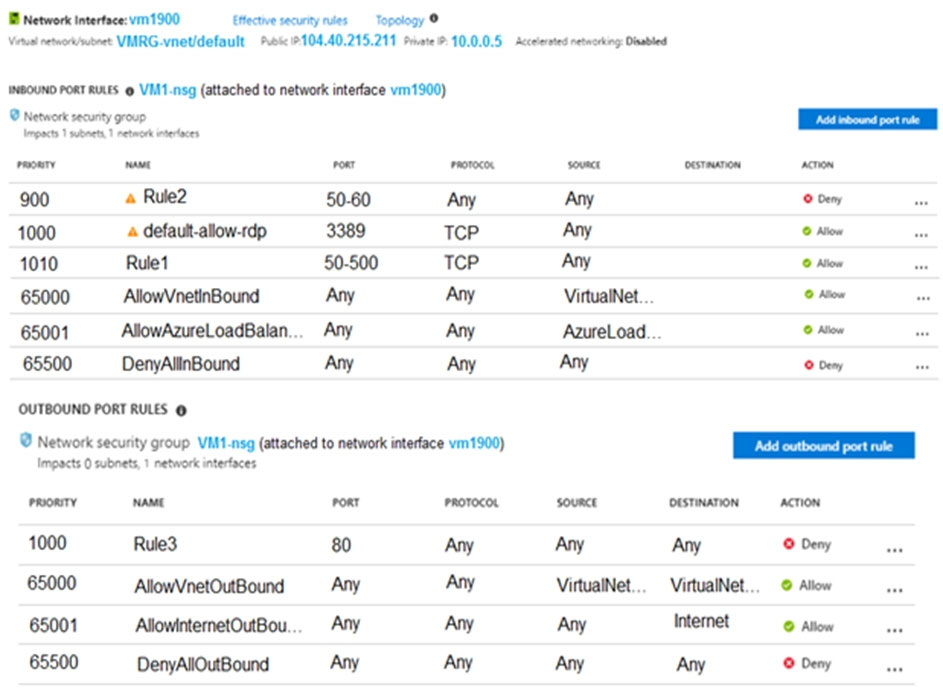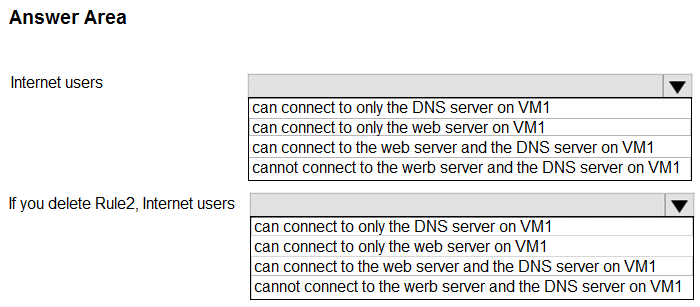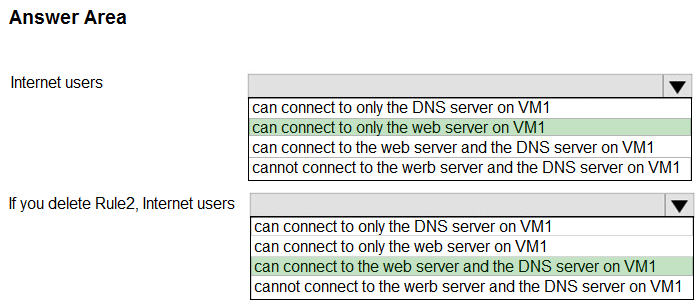
Expert Verified, Online, Free.

HOTSPOT -
You have an Azure subscription named Subscription1. Subscription1 contains a virtual machine named VM1.
You install and configure a web server and a DNS server on VM1.
VM1 has the effective network security rules shown in the following exhibit.
Use the drop-down menus to select the answer choice that completes each statement based on the information presented.
NOTE: Each correct selection is worth one point.
Hot Area:

Cloudyuga
Highly Voted 3 years, 11 months agogsbence
Highly Voted 3 years, 11 months agoJ4U
2 years, 9 months agotashakori
Most Recent 1 month, 1 week agowalexkino
3 years agoVarshathvar
3 years agosamatar
3 years, 3 months agonetworkingcontrol
3 years, 3 months agojjkidd72
3 years, 8 months agoAki_Aeshan
3 years, 6 months agomanishkhare
3 years, 8 months agoGbala
3 years, 8 months agoAchilles81
3 years, 7 months agosidharthwader
2 years, 12 months agokrst
3 years, 8 months agoJ4U
2 years, 9 months agoShades
3 years, 8 months agoBanaben
3 years, 8 months agoGizdagyerek
3 years, 9 months agoGizdagyerek
3 years, 8 months agoJimD79
3 years, 9 months agoit115
3 years, 10 months agopaulosrsf
3 years, 9 months agoSitender
3 years, 10 months agoexammood15
3 years, 10 months agokopper2019
3 years, 10 months agomacco455
3 years, 10 months agobella
3 years, 11 months agonfett
3 years, 11 months ago